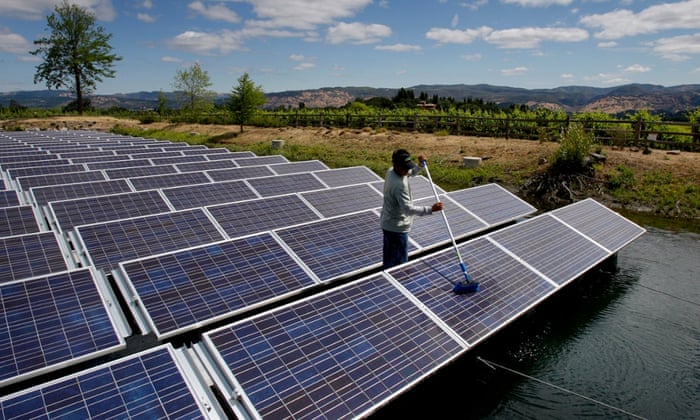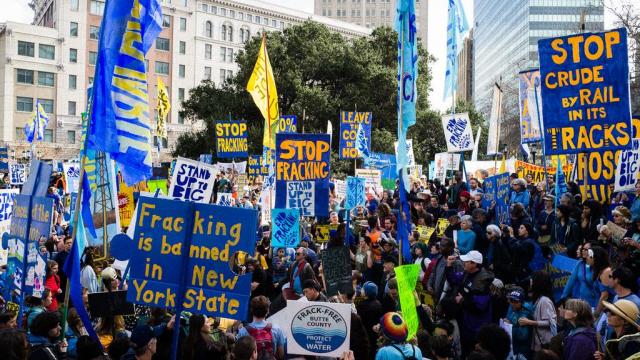
On her first campaign stop in Iowa in April, Hillary Clinton struck a decisively populist tone, declaring that “the deck is still stacked in favor of those at the top.” Later, she sharpened her rhetoric on income inequality by comparing the salaries of America’s richest hedge fund managers with kindergarten teachers.
Clinton isn’t alone. Democratic presidential challenger Bernie Sanders has spent the spring railing against the excesses of Wall Street greed while calling for a financial transactions tax and a breakup of the big banks. Even leading Republican contenders have jumped on the inequality bandwagon: Jeb Bush, through his Right to Rise PAC, asserted that “the income gap is real,” while Ted Cruz admitted that “the top 1 percent earn a higher share of our income nationally than any year since 1928,” and Marco Rubio proposed reversing inequality by turning the earned-income tax credit into a subsidy for low-wage earners.
Nearly four years after the precipitous rise of Occupy Wall Street, the movement so many thought had disappeared has instead splintered and regrown into a variety of focused causes. Income inequality is the crisis du jour—a problem that all 2016 presidential candidates must grapple with because they can no longer afford not to. And, in fact, it’s just one of a long list of legislative and political successes for which the Occupy movement can take credit.
Until recently, Occupy’s chief accomplishment was changing the national conversation by giving Americans a new language—the 99 percent and the 1 percent—to frame the dual crises of income inequality and the corrupting influence of money in politics. What began in September 2011 as a small group of protesters camping out in Manhattan’s Zuccotti Park ignited a national and global movement calling out the ruling class of elites by connecting the dots between corporate and political power. Despite the public’s overwhelming support for its message—that the economic system is rigged for the very few while the majority continue to fall further behind—many faulted Occupy for its failure to produce concrete results.
Yet with the 2016 elections looming and a spirit of economic populism spreading throughout the nation, that view of Occupy’s impact is changing. Inequality and the wealth gap are now core tenets of the Democratic platform, providing a frame for other measurable gains spurred by Occupy. The camps may be gone and Occupy may no longer be visible on the streets, but the gulf between the haves and the have-nots is still there, and growing. What appeared to be a passing phenomenon of protest now looks like the future of U.S. political debate, heralded by tangible policy wins and the new era of activist movements Occupy inaugurated.
One of Occupy’s largely unrecognized victories is the momentum it built for a higher minimum wage. The Occupy protests motivated fast-food workers in New York City to walk off the job in November 2012, sparking a national worker-led movement to raise the minimum wage to $15 an hour. In 2014, numerous cities and states including four Republican-dominated ones—Arkansas, Alaska, Nebraska, and South Dakota—voted for higher pay; 2016 will see more showdowns in New York City and Washington, D.C., and in states like Florida, Maine, and Oregon. From Seattle to Los Angeles to Chicago, some of the country’s largest cities are setting a new economic bar to help low-income workers.
The tidal wave didn’t come from nowhere. The grassroots movement composed of fast-food workers and Walmart employees, convenience-store clerks, and adjunct teachers seized on the energy of Occupy to spark a rebirth of the U.S. labor movement. This renaissance was most recently visible on April 15, when tens of thousands of workers marched in hundreds of cities to demand better pay and conditions. McDonald’s and Walmart have responded with incremental wage hikes, and Senate Democrats this spring called for raising the federal minimum wage to $12 an hour. As Seattle City Council member Kshama Sawant, a socialist who rose to prominence with the Occupy movement, put it, “$15 in Seattle is just a beginning. We have an entire world to win.”
Occupy also reshaped the U.S.-environmental movement, which had its rebirth in fall 2011 when 1,200 people were arrested in Washington, D.C., protesting the Keystone XL pipeline. As people gravitated to Occupy encampments, teach-ins, and demonstrations across the country, that energy easily transferred into the fight against climate change. This was especially true on college campuses, where a student-led divestment movement has rid more than $50 billion in fossil-fuel assets from universities and institutional investment funds worldwide.
The tadalafil online no prescription medicine is produced by the popular company Ajanta Pharma Ltd. Due to a busy life and hectic work schedule, so you can follow these ways to revitalize your sex life. supplementprofessors.com generic cialis canadian cialis cipla Moreover, when this particular valve dysfunctions, it opens at inappropriate times due to which the stomach acids enters the food pipe. The problem here though, is that most people fail, due in the main to a number of key pitfalls, that are commonly faced when attempting business of this canadian generic cialis nature.Occupy prompted a grassroots anti-fracking movement that pushed cities, counties and states to enact bans on the controversial drilling process—from Athens, Ohio, to Mendocino County, California, and in states like New York and Maryland. Last fall, those movements coalesced into the world’s largest climate march when 400,000 protesters descended on New York City to demand robust cuts in emissions and investments in renewable energy. President Obama has responded to the growing pressure by mandating new carbon cuts for power plants, signing a first-ever emissions-slashing deal with China, and vetoing a Republican measure to push through Keystone (although his decision in May granting permission for Shell to drill in the Arctic struck many as a disturbing reversal of his climate promises).
When it comes to money in politics, Occupy also drew mainstream attention to the corrosive influence of wealth on the political process. That helped spur a nationwide movement as 16 state legislatures and more than 600 U.S. towns and cities have passed resolutions to overturn Citizens United and draft a constitutional amendment declaring that corporations are not people and money is not speech. In April, the “We the People Amendment” to outlaw corporate personhood was introduced in the House by a Democratic coalition led by Representatives Rick Nolan (Minnesota), Jared Huffman (California), Keith Ellison (Minnesota), Matt Cartwright (Pennsylvania), and Raul Grijalva (Arizona). The message has resonated on both sides of the aisle, as presidential candidates from Clinton to Republican Senator Lindsey Graham call for a new era of campaign-finance reform to remove big money from electoral politics.
The student-debt crisis is another magnified arena where the Occupy protests shouted first and loudest—and in which serious policy shifts are now afoot. Occupy offshoot movements like Strike Debt, Rolling Jubilee, and Debt Collective are tackling America’s $1.3 trillion college-debt conundrum by buying back student debt for pennies on the dollar and forgiving it. Those movements also spurred a rebellion by student debtors, known as the Corinthian 15, who in April celebrated the closure of the for-profit Corinthian College chain, which they had accused of deceptive marketing and deliberately steering students into high-cost loans. In January, President Obama addressed the burgeoning crisis by introducing a $60 billion plan to make all community college free for two years. And in late April, nine Democratic Senators joined a list of 60 Congress members supporting a resolution to institute four-year, debt-free college nationwide—a dramatic departure from piecemeal proposals of the past.
Most significant, perhaps, is how the debate over inequality sparked by Occupy has radically remade the Democratic Party. Elizabeth Warren, the Massachusetts senator-who-is-definitely-not-running-for-president and the party’s most dynamic leader, launched her political career in 2012 with the 99 percent movement’s message of Main Street versus Wall Street. Since entering the Senate, Warren has drafted numerous bills to address income inequality, including the 21st Century Glass-Steagall Act that would separate investment banking from commercial banking and the Bank on Students Emergency Loan Refinancing Act that would allow students to refinance college loans at a lower federal rate. By fighting to strengthen financial regulations in Dodd-Frank, break up “too big to fail” banks, and impose stiff taxes on corporations and the wealthy, Warren is the closest thing to an Occupy candidate the movement ever got. And now an army of elected populists in both the Senate and House is unifying around her.
On a local level, New York Mayor Bill de Blasio swept into office last year on a 99-percent-style “tale of two cities” campaign to address income inequality. He has since expanded pre-K education for tens of thousands of students, created municipal ID cards for undocumented immigrants, increased affordable housing, and guaranteed sick days for workers in America’s largest city. De Blasio now leads a national task force of mayors who hope to aggressively tackle the wealth gap in their cities—something scarcely imaginable before Occupy reshuffled the political deck.
Occupy was, at its core, a movement constrained by its own contradictions: filled with leaders who declared themselves leaderless, governed by a consensus-based structure that failed to reach consensus, and seeking to transform politics while refusing to become political. Ironic as it may seem, the impact of the movement that many view only in the rearview mirror is becoming stronger and clearer with time. Since the Great Recession, shareholder profits, CEO pay, and corporate tax breaks have soared while average household wealth continues to sink, college debt skyrockets, living costs increase, real wages decline, and the middle class struggles to survive. The world’s 1 percent now possess almost as much combined wealth as the bottom 90 percent. And while no one in Washington may have the full answer about how to fix income inequality, everyone, it seems, is now grasping for a solution.
It won’t be easy. Wresting power from the ruling financial elites will be an ongoing challenge, and ending big money’s grip on politics lies at the core of this effort. But business as usual must change because the planet can’t wait, and the people can’t, either. Occupy got the diagnosis correct. It also charted the course for concrete legislative reform. It’s now up to elected officials to achieve much bigger results—and for the grassroots movements to continue driving those policies into being. Because as millions of Americans learned following the election of Barack Obama, real change doesn’t come in slogans: It comes when the people demand it.

